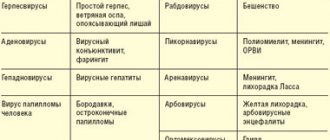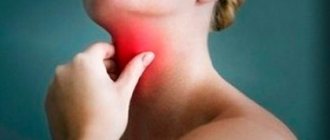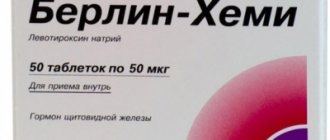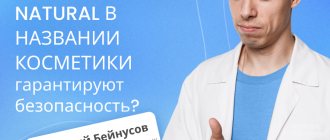Antifungal drugs are a special group of drugs that are used to treat fungal diseases.
Fungal diseases (mycoses) are divided into systemic (affecting internal organs) and superficial (localized) mycoses.
The most common are superficial mycoses - fungal diseases of the skin (dermatomycosis - trichophytosis, microsporia, pityriasis versicolor) and nails (onychomycosis), as well as mycoses caused by fungi of the genus Candida (candidiasis) - vaginal candidiasis (or thrush).
Systemic mycoses are quite rare, mainly in patients with reduced immunity (congenital immunodeficiency, AIDS, after organ and tissue transplantation, during treatment of malignant tumors). Often the source of systemic mycoses in such patients is intravascular catheters contaminated with fungal spores, which are placed during hospital treatment for several days for regular infusions of drugs.
Antifungal drugs are used to treat both systemic and superficial mycoses.
Effective treatment of systemic mycoses, in addition to antifungal drugs, additionally includes the correction of immune disorders, as well as the mandatory elimination of sources of infection (in particular, intravascular catheters).
Indications for use
Antifungal drugs are used for diseases caused by pathogenic fungi - mycoses: deep (or systemic) mycoses, in which fungi affect internal organs and the central nervous system - aspergillosis, cryptococcosis, coccidioidomycosis, histoplasmosis, blastomycosis; superficial mycoses (or dermatomycosis) of the skin, scalp, nails - pityriasis versicolor, microsporia, trichophytosis, epidermophytosis, onychomycosis, mycosis of the ear canal.
In addition, antifungal drugs are used for candidiasis of the mucous membranes of the oral cavity, pharynx, esophagus, skin, genital organs - vaginal candidiasis, candidiasis of internal organs.
Classification of antifungal drugs
Antifungal drugs are classified into:
- antifungals for systemic use: antibiotics: amphotericin B, griseofulvin;
- imidazole derivatives: ketoconazole;
- triazole derivatives: fluconazole, itraconazole, voriconazole, posaconazole;
- allylamines: terbinafine;
- echinocandins: anidulafungin, caspofungin, micafungin;
- antibiotics: nystatin, natamycin;
In addition, there are combination drugs containing an antifungal agent and a corticosteroid (clotrimazole + beclamethasone; isoconazole + diflucortolone; natamycin + neomycin + hydrocortisone), as well as: bifonazole + urea; clotrimazole + gentamicin + calendula extract + yarrow extract; clotrimazole + salicylic acid; miconazole + metronidazole.
ANTIMYCOTIC DRUGS FOR TREATMENT OF ONYCHOMYCOSIS
Preferanskaya Nina Germanovna Associate Professor of the Department of Pharmacology, Institute of Pharmacy named after. A.P. Nelyubin First Moscow State Medical University named after. THEM. Sechenov (Sechenov University), Ph.D.
Pathogenic fungi are not present in the natural microflora of humans and animals. Fungi are eukaryotes that do not have chlorophyll and are not capable of photosynthesis. Most fungi are saprophytes of the environment (heterotrophs) and require nutrition with ready-made organic substances. The body of the fungus is represented by mycelium - a network of thin branching tubular threads called hyphae. Fungi reproduce by spores. Getting into the tissues of a susceptible host through accidental inoculation, in its favorable nutrient substrates, fungi can cause various diseases of the skin, mucous membranes, and internal organs. Fungal diseases are called mycoses (from the Greek mykes - mushroom).
The causative agents of mycoses are parasitic microscopic fungi of the genus: Arthroderma, Aspergillus, Amanita, Microsporum, Penicillium, Candida, Saccharomyces, Trichophyton, Epidermophyton, etc. Systemic mycoses of internal organs are very severe and can affect, in addition to the skin, muscles, bones, internal organs and the nervous system. system. Actinomycosis is a serious disease caused by radiant fungi actinomycetes, blastomycosis is a deep mycosis of the skin, the causative agent is a pathogenic dimorphic fungus. Deep (visceral) mycoses also include other diseases. Superficial mycoses affect the stratum corneum of the skin, scalp, nail plates and mucous membranes.
The most common are keratomycosis , which affects only the stratum corneum of the skin; dermatomycosis affects smooth skin, epidermis and its appendages: hair, nails.
Depending on the type of pathogenic fungus and the localization of the pathological process, the following are distinguished:
- epidermophytosis - mycoses of the skin of the inguinal folds, shins, interdigital folds, hands;
- trichomycosis (from the Greek trichos - hair) - damage to the scalp, vellus hair on the body;
- trichophytosis (ringworm), microsporia, favus (scab);
- onychomycosis (from the Greek onychos - nail) - damage to the nail plates on the hands or feet by dermatophytes (less often mold or yeast fungi).
For diseases caused by various types of pathogenic or opportunistic fungi, antifungal drugs are used. Depending on the location of pathogenic fungi, antifungal drugs are classified into drugs for the treatment of:
- systemic mycoses;
- candidomycosis;
- superficial mycoses.
Chemical classification divides antifungal drugs into:
¤ antibiotics:
- polyene antibiotics (amphotericin B, amphoglucamine, natamycin, nystatin);
- non-polyene antibiotics (griseofulvin);
¤ synthetic drugs:
- imidazole derivatives (bifonazole, isoconazole, ketoconazole, clotrimazole, miconazole, oxiconazole, omoconazole, sertaconazole);
- triazole derivatives (itraconazole, fluconazole, thermoconazole, tioconazole);
- allylamine derivatives (terbinafine, naftifine);
- morpholine derivatives (amorolfine);
- derivatives of different chemical groups: undecylenic acid ciclopirox, flucytosine, potassium iodide, etc.
ONYCHOMYCOSIS
The cause of onychomycosis is infection of the nail plates. Most infections occur in public baths, saunas, and swimming pools. The scales, which contain spores and mycelium of fungi, fall off in patients with onychomycosis and end up on the floor, benches, grates, paths, carpets and bedding. In conditions of high humidity, fungi can not only persist for a long time (years), but also multiply, which makes them an intense source of infection. A person who moves on the floor barefoot or touches household items that have such scales may well become infected, because they stick to his skin and are fixed. The infection develops after the fungus penetrates the nail structure. Subsequently, they begin to become more active, multiply and form tunnels and passages. When affected, the nails thicken, crumble, turn yellow and break. Sometimes the process also affects the skin, which is accompanied by itchy, flaky rashes in the interdigital area. Such diseases are characterized by a long and persistent course.
The likelihood of susceptibility to infection increases with age, especially in older people over 65 years of age, which is due to the presence of chronic diseases such as vegetative-vascular pathology, diabetes mellitus, peripheral circulatory disorders, osteoarthropathy of the feet, etc. The increase in the prevalence of onychomycosis may also be associated with impaired immunity or changes in the nail plates.
Treatment of onychomycosis is carried out strictly according to a specific scheme for a long period of time - from 2 to 4 months. The therapy uses antimycotics, which have a fungistatic and fungicidal effect and affect various stages of the life activity and metabolism of pathogens. There are three main mechanisms of antimycotic action of antifungal drugs, which manifest their activity as a result of:
- disturbances in the structure and function of the cell wall of fungi (imidazoles, triazoles);
- disruption of mitosis of eukaryotic cells by inhibiting the synthesis of nucleic acids (griseofulvin);
- inhibition of transmembrane exchange processes through the cell membrane of fungi (ciclopirox).
DRUGS OF CHOICE
Griseofulvinum (Griseofulvinum) tab. 125 mg - an antibiotic produced by the mold Penicillium nigricans (griseofulvum), was isolated in 1939 and is structurally a spiro derivative of benzofuran. The drug has fungistatic properties against all types of fungi - trichophytes and epidermophytes. The mechanism of fungistatic action is based on the ability of the drug to inhibit cell division of filamentous fungi in metaphase, causing characteristic morphological changes (twisting, increased branching and curvature of hyphae), disrupting the structure of the mitotic spindle and cell wall synthesis. To a small extent, the drug inhibits the synthesis and polymerization of nucleic acids. The drug does not have antibacterial activity.
To create a sufficient concentration of the drug in the skin, long-term treatment is necessary - 2-3 months min. Only on new, regrown nails will the first symptoms of treatment effectiveness be noticeable.
Important! Side effects when taking the drug include: dyspeptic disorders, dizziness, sometimes insomnia, allergic reactions, leukopenia. Griseofulvin is contraindicated in cases of suppression of hematopoiesis, liver and kidney failure, as well as in infants and pregnant women. The drug should not be prescribed to transport drivers, persons engaged in high-altitude work or requiring increased attention, rapid mental and motor reactions. Patients should be warned about the development of possible cross-sensitivity to penicillin and the increased effects of alcohol.
Ketoconazole - TN "Nizoral", "Livarol", "Mikozoral" - an active broad-spectrum drug from the imidazole group, which has fungicidal and fungistatic activity; effective when taken orally for systemic and superficial mycoses, dermatomycosis and candidiasis. Prescribed by a doctor for the treatment and prevention of fungal infections of the skin, hair, nails, and genitals caused by pathogens sensitive to the drug.
When administered orally, the drug is well absorbed, dissolves and is absorbed in an acidic environment.
Important! The drug is well tolerated by patients, but can cause dyspeptic symptoms (nausea, vomiting, diarrhea), very rarely allergic reactions occur in the form of urticaria and skin rash, headache, dizziness, gynecomastia, impotence. When the drug is used simultaneously with other drugs (fentanyl, tamsulosin, carbamazepine, salmeterol, etc.), the concentration of the latter may increase with an increase in side effects.
Contraindicated in case of severe liver or kidney disorders, pregnancy, during breastfeeding and hypersensitivity to the drug.
Ketoconazole is available in tablet form. 200 mg, suppository. 400 mg; 2% ointment, 15 mg; cream 20 mg/g - 15 g. Used in the form of shampoos: Ketonazole 2% (75 and 150 ml), Nizoral (25 and 60 ml), Perhotal, Sebozol. The duration of treatment is determined individually.
Itraconazole (Itraconazolum) caps. 100 mg; solution 10 mg/ml - vial. 150 ml, - TN "Orungal", "Rumikoz" - the drug has a wide spectrum of action, selectively and specifically inhibits the enzyme that catalyzes the synthesis of fungal sterols. Area of application: various infections caused by dermatophytes and/or yeast and mold fungi, such as candidiasis of the mucous membranes (including vagina), skin mycoses, onychomycosis , epidermomycosis, fungal infections of the eyes (keratitis), peritoneum and other localizations. Taking Itraconazole capsules immediately after meals increases its bioavailability; The maximum concentration in blood plasma is achieved within 3–4 hours. after ingestion. The drug is well distributed in tissues that are susceptible to fungal infections.
Important! When using the drug, side effects from the digestive system may occur: dyspepsia (nausea, vomiting, diarrhea, constipation, loss of appetite), abdominal pain, impaired taste perception; headache, dizziness, allergic reactions, alopecia, from the hematopoietic organs (uncommon) - leukopenia, thrombocytopenia. Use is contraindicated in case of hypersensitivity to itraconazole or any of the components of the drug, children under 3 years of age, pregnancy and lactation.
For optimal absorption of the drug, it is necessary to take the capsules without chewing, immediately after meals, and swallow them whole. One course of pulse therapy for onychomycosis consists of taking 2 caps daily. the drug twice a day for one week. For the treatment of fungal infections of the nail plates of the hands, two courses are recommended. Three courses are recommended for the treatment of fungal infections of the nail plates of the feet. The interval between courses during which you do not need to take the drug is 3 weeks.
Terbinafine (Terbinafine) - TN "Lamisil", "Exifin", "Fungoterbin", "Terbizil" - is available in the form: table. 250 mg; 1% ointment 15.0 g; 1% cream - 10, 15, 30 g tube; 1% spray, 20 ml. The drug is classified as an allylamine and is prescribed for systemic and external use. The mechanism of action of Terbinafine is associated with inhibition of the initial stage of biosynthesis of ergosterol (the main cellular sterol of the fungal membrane) by inhibiting the specific enzyme squalene-2,3-epoxidase on the fungal membrane. The drug is effective against many fungi that are pathogenic to humans. For local treatment, Terbinafine is more effective than azole imidazole derivatives, but comparable to itraconazole, and when administered orally it is more effective than griseofulvin and itraconazole. Terbinafine is characterized by lipidophilicity, quickly diffuses into the stratum corneum of the epidermis, dermis, subcutaneous tissue, and accumulates in the sebaceous glands, hair follicles and nail plates in concentrations that provide a fungicidal effect. 1 table Once daily terbinafine resulted in higher cure rates and better results for each outcome measure (including mycological cure) than intermittent intraconazole therapy.
Naftifine cream 1% - 15, 30 g; 1% solution 10, 20, 30 ml, - TN "Exoderil", "Mikoderil" - a derivative of allylamines. The mechanism of action is associated with inhibition of the activity of the enzyme squalene-2,3-epoxidase, inhibition of the biosynthesis of ergosterols, which leads to disruption of cell wall synthesis. Naftifine has a wide spectrum of action, acting fungicidal against dermatophytes (such as Trichophyton, Epidermophyton, Microsporum), mold (Aspergillus spp.), yeast-like fungi (Candida spp., Pityrosporum) and other fungi, for example, the causative agents of sporotrichosis (Sporothrix schenckii) . The drug has an anti-inflammatory effect and reduces itching. When used externally, it penetrates well into the skin, creating stable antifungal concentrations in its various layers.
The duration of treatment with Naftifin varies from 2 weeks to 6 months. When using the drug, dryness and redness of the skin, a burning sensation may be observed; all these side effects are reversible and do not require withdrawal.
Amorolfine (Amorolfine) nail polish 5% - 2.5 and 5 ml, - TN "Loceril", "Onihelp", "Oflomil" - a drug for external use, has a wide spectrum of action, providing a fungistatic and fungicidal effect due to damage cytoplasmic membrane of the fungus by disrupting the biosynthesis of sterols, due to inhibition of the enzymes 14-gamma-demethylase and 7-gamma-isomerase. The drug is active against both the most common and rare pathogens of fungal nail infections: dermatophytes: Trichophyton spp., Microsporum spp., Epidermophyton spp.; mold fungi: Alternaria spp., Scopulariopsis spp., Нendersonula sppi.; fungi from the family Dematiaceae: Cladopsorium spp., Fonsecaea spp., Wangiella spp.; dimorphic fungi Coccidioides spp., Histoplasma spp., Sporothrix spp.
When applied to nails, the drug penetrates into the nail plate and further into the nail bed, almost completely within the first 24 hours. The effective concentration remains in the affected nail plate for 7–10 days. already after the first application. Systemic absorption is negligible. For external use. The drug is applied to damaged nails of the fingers or toes 1-2 times a week. The duration of treatment is determined individually and depends on the indications for use. Side effects occur rarely and manifest themselves in the form of itching, burning at the site of application. Not prescribed for young children and infants.
Undecylenic acid and its salts are antifungal drugs for external use that have a fungistatic and fungicidal effect against dermatophytes; when combined with zinc or copper salts - zinc undecylenate or copper undecylenate - the activity of the action increases. Zinc, which is part of the drug, has an astringent effect, reduces signs of skin irritation and promotes faster healing.
- Undecylenic acid + Zinc undecylenate ( TN Mikoseptin, ointment 30 g tube, ointment 25 g in bottles) ;
- Undecylenic acid + Copper undecylenate + Glycerol vinyl chloride ether ( TN “Undecin” ) - used for the treatment and prevention of fungal skin diseases caused by fungi (dermatophytes) sensitive to the drug.
The preparations are applied to a clean, dry surface of the affected skin 2 times a day (morning and evening). The duration of treatment is 4–6 weeks and depends on the nature, effectiveness and course of the disease. After the disappearance of clinical signs of the disease, continue to use 1 time per day. For preventive purposes - 2 times a week.
Important! A contraindication to the use of the drug is hypersensitivity to undecylenic acid and its derivatives.
Ciclopirox nail polish 8%, fl . 3 g, - TN "Batrafen" - a broad-spectrum antifungal drug that inhibits the capture of precursors for the synthesis of macromolecules in the cell membrane. Used externally for the treatment and prevention of fungal infections of the skin, mucous membranes, nails , fungal vaginitis and vulvovaginitis.
The drug is applied 1-2 times a day to the affected nail, the duration of use depends on the severity of the lesion, but should not exceed 6 months.
Treatment of onychomycosis should be carried out under the strict supervision of a dermatologist. As a rule, rational etiotropic complex therapy is used. A decrease or disappearance of clinical symptoms is usually observed several days after taking the antimycotic. However, in order to avoid relapse of the disease, the course of treatment should be completed completely. Against the background of clinical cure, anti-relapse therapy is often carried out, aimed at preventing re- infection.
Basics of antifungal treatment
The duration of treatment with antifungal drugs is always individual and usually depends on the type of mycosis, as well as the severity of the disease. The minimum course of treatment for vaginal candidiasis (thrush) is from 1 to 3 days. The maximum duration of treatment for nail mycoses (onychomycosis) is up to 6-12 months. On average, the duration of treatment for superficial mycoses is 14-30 days.
For mycoses of the nails and feet, topical use of antifungal drugs should be continued for another 2-3 weeks after the manifestations of the disease disappear in order to avoid exacerbation and return of the disease.
Antifungal and anti-inflammatory drugs
07.03.2018
Salicylic ointment is a medicine indicated for chronic eczema , psoriasis , dyskeratosis, ichthyosis, oily seborrhea, acne , warts, calluses . It is applied to the affected surface 2-3 times a day.
The drug is contraindicated in case of hypersensitivity to salicylic acid and in childhood. Side effects are rare. These are local reactions in the form of skin rash, itching, burning, as well as allergic reactions .
Amphotericin B is an antifungal antibiotic intended for the treatment of candidiasis of the skin and mucous membranes, as well as candidiasis of the gastrointestinal tract and internal organs, chronic granulomatous and disseminated forms of candidiasis , coccidioidosis, histoplasmosis, chromomycosis, mold mycoses. The ointment is applied to the affected areas of the skin in a thin layer 2-4 times a day. The course of treatment for candidiasis of skin folds is 1-3 weeks, for diaper rash in children - 1-2 weeks, for lesions of the interdigital spaces and paronychia - 2-4 weeks.
liver and kidney dysfunction , diseases of the hematopoietic system, diabetes mellitus , and hypersensitivity to its components. When used externally, a burning sensation, tingling sensation, skin flushing, and rarely dry skin are possible.
Nystatin is an antifungal drug intended for the prevention and treatment of diseases caused by yeast-like fungi of the genus Candida, candidiasis of the skin , mucous membranes ( mouth , vagina ) and internal organs (gastrointestinal tract, lungs , kidneys ). For prophylactic purposes, it is prescribed to prevent the development of candidiasis during long-term treatment with penicillin and antibiotics of other groups, especially with oral use of tetracycline antibiotics, chloramphenicol, neomycin and others, as well as in weakened and depleted patients. When treating fungal infections of the mucous membranes and skin, nystatin ointment can be used. It can be combined with oral nystatin. For candidiasis of the lower intestines , colpitis and vulvovaginitis, rectal suppositories and vaginal globules containing 250,000 and 500,000 units each are used. They are administered 2 times a day, respectively, into the rectum or vagina ; The average course duration is 10–14 days.
Contraindications and side effects are the same as when taking amphotericin B.
Fluconazole is a broad-spectrum antifungal agent that has a powerful antifungal effect against the causative agents of candidiasis , thrush , some forms of lichen , dandruff (Candida, Microsporum, Cryptococcus neoformans, Trichophyton). Fluconazole is used for skin mycoses (including mycoses of the feet, groin area), pityriasis versicolor , onychomycosis, deep endemic mycoses, systemic cadidosis, cryptococcosis, for the prevention of fungal infections in patients with reduced immunity .
For candidiasis , mycoses of the feet, body, and groin area, 150 mg is prescribed once a week, treatment duration is 2–4 weeks. For cryptococcal infections, candidemia, disseminated candidiasis , and other invasive candidiasis infections, 400 mg is prescribed on 1 day, then 200–400 mg 1 time per day.
For deep endemic mycoses - 200-400 mg per day for a long time up to 2 years. The duration of therapy is determined individually; it can be 11–24 months for coccidioidomycosis, 2–17 months for paracoccidioidomycosis, 1–16 months for sporotrichosis, and 3–17 months for histoplasmosis. For children over one year of age, fluconazole is administered once a day at the rate of 1–3 mg/kg (for candidiasis of the mucous membranes) and 3–12 mg/kg (for systemic candidiasis or cryptococcosis) depending on the severity of the disease.
Fluconazole is contraindicated in case of hypersensitivity to its components, pregnancy , or in children under 1 year of age.
When using the drug, side effects are possible: nausea , headache, discomfort in the abdominal cavity, increased activity of liver enzymes, severe liver , headache, dizziness ; rarely - convulsions, agranulocytosis, leukopenia, thrombocytopenia; very rarely - skin rash, anaphylactic reactions.
Pimecrolimus is an anti-inflammatory drug indicated for atopic dermatitis ( eczema ). It is recommended for both short-term and long-term use in adults, adolescents and children (from 3 months). Prescribed externally 2 times a day.
The drug is contraindicated in case of hypersensitivity to its components.
When taking pimicrolimus, side effects are possible: burning at the site of application of the cream, local reactions (irritation, itching and redness of the skin, rash, pain, paresthesia, peeling, dryness, swelling, skin papillomas, boils), skin infections (folliculitis), suppuration, deterioration course of the disease, herpes simplex, dermatitis caused by the herpes simplex virus (eczema herpes ), molluscum contagiosum. In rare cases, alcohol intolerance appears (immediately after drinking alcohol, facial , rash, burning, itching or swelling were usually observed).
Dioxomethyltetrahydropyrimidine + sulfadimethoxine - trimecaine + chloramphenicol - a combined drug with antimicrobial, anti-inflammatory and local anesthetic effects, accelerating wound healing. Indicated for the treatment of purulent wounds in the first phase of the wound process. It is applied topically in the form of applications. Sterile gauze pads are soaked in the ointment and loosely filled into the wound. Dressings are performed daily until the wound is completely cleansed of purulent-necrotic masses. The ointment can be injected into purulent cavities through a drainage tube using a syringe.
The drug is contraindicated in case of hypersensitivity to its components.
When used, local allergic reactions in the form of skin rash are possible.
Published in Medicines Premium Clinic








